Strings for violin
Here you can find our comprehensive range of strings for violin Pirastro.
The different strengths of the strings can be found in the option selection by selecting the relevant product.
Choose the desired category:
Choosing Violin Strings
If you are in a place where the sound that you get out of your violin is important to you and when you want to get an instrument that is perfectly geared towards the sound that you want to produce, you will find that you are going to need to think about what the strings. There are many different types of string out there and when you are looking for the ones that will most suit you, there are a number of things that you need to be aware of.
When you are thinking about different kinds of string, remember that you should consider the four main categories, these being steel, gut core strings, synthetic core strings, and a blend of gut and synthetic strings. Steel strings are the most common strings found on student instruments and in electric violins, and they respond very readily, but with a rather thin, flat sound. Many people feel that in a professional instrument, only an E string should made of steel.
Violin strings made out of gut are typically made out of sheep intestine and they have been used for hundreds of years. They can create a wonderfully complex and varied sound and they were practically the only choice until synthetic string entered the market back in the seventies. The drawback to the sound that you get is that they need to be re-tuned constantly and their response is surprisingly slow.
Synthetic violin strings seek to reproduce all of the advantages of gut, but with none of the drawback. They do need a few days to stretch, but then they will stay in tune for days at a time. They have a quick response and they can take a lot more bow pressure than natural gut can. This type of violin string is frequently the only choice for professional violinists, especially soloists. There are still different types of synthetic violin strings in development, but it is important to remember that newer is not always better.
2008 saw the release of a combination string, with a gut covering and a synthetic core. These strings are so new that there does not seem to be a consensus as to their value. They do indeed seem to have the stability of a synthetic string and they do tend to have a warmth to the tone that synthetic strings lack.
Take a moment to consider what your choices might be when you are thinking about violin strings. Always remember that changing a string means that the stability of your bridge is going to be disrupted. A bridge that is leaned too far can risk snapping or collapse, which in turn could cause the wood in the body of the violin to become damaged. Also, keep in mind that the true sound that you are likely to get out of string will take upwards of three or four days to show up.
There is a lot to think about when you are considering violin strings, so make sure that you make an informed choice!
Buying violin string sets and rosin for best prices set.
Violin Strings Review: How do You Begin to Choose?

Many violin players find choosing strings for their instrument confusing. The selection of strings available is huge and can be overwhelming. We’ve put together an overview of the types of violin strings in use today, and their pros and cons. We’ll also introduce you to our favorite, most-recommended sets and tell you what you can expect from them.
Types of Violin Strings
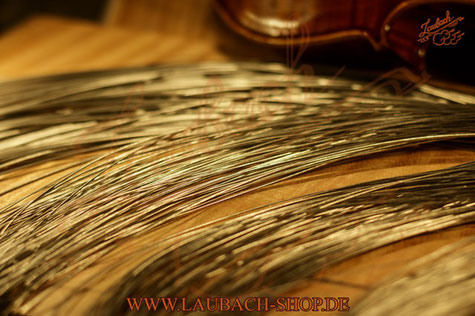
1. Steel:
Steel strings are often used by fiddlers, who value their brighter sound and durability. They tend to be more affordable than other types of strings, and lower-end instruments commonly come from the factory with steel strings. They’re not as stretchy as other types of strings, which means they don’t have to be tuned as often when new and work better with fine tuners.
Steel strings work wonderfully for smaller-sized instruments, fiddling, electric violins and outdoor playing.
Pros: durable, not very stretchy, affordable
Cons: tinnier sound, not as lively a response as other materials
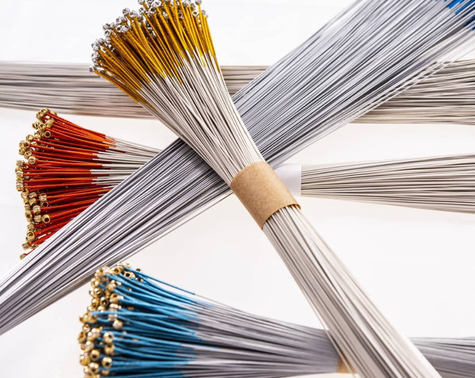
2. Synthetic:
Synthetic strings are the go-to strings for the modern classical violinist. They tend to have a good response (they react to the bow well) and a warmer sound than steel. Because they are stretchier than steel strings, they have to be tuned frequently when new and don’t work as well with fine tuners.
Pros: warm tone, good response
Cons: pricier, don’t tune as well with fine tuners
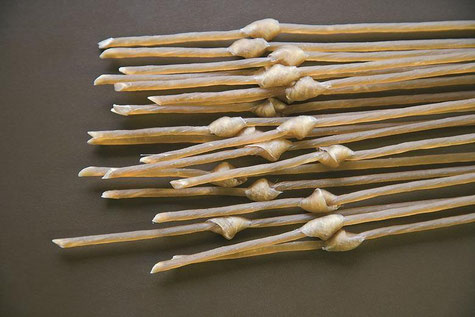
3. Gut:
Gut strings are not commonly used on modern instruments. They are indeed made out of animal intestines (yes—yuck). Gut strings are often used for playing period music, usually baroque. They have a warm, mellow tone prized by people who want an authentic period sound.
Pros: Good for period music, very mellow tone
Cons: very expensive, need to be replaced frequently
Our Favorite Violin Strings

CHROMCOR for Violin - These steel strings are durable and affordable, with a nice tone. Great for fiddlers!
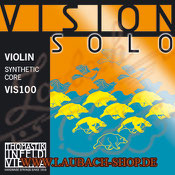
VISION SOLO for Violin - Possibly the most popular synthetic strings. They are a great set for all skill levels. Not too bright or too dark.
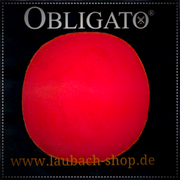
OBLIGATO for Violin - These synthetic strings are the best for warming up the tone of a too-bright violin.

EVAH PIRAZZI for Violin - Synthetic strings with great brightness, volume and clarity of tone. We recommend these for instruments that tend to be too dark sounding.
Keep in mind that putting the right set of strings on your instrument will improve the sound, but can’t fundamentally change it. Just as putting whipped cream on a bad pie won’t make it yummy, even the best strings can’t fix an instrument with poor sound.

Vision Solo for Violin features a technically advanced formulation and architecture designed to produce a blend of exceptional playing and performance characteristics. Based upon feedback by a variety of top level players, here is how the performance of Vision Solo can be described:
Sound Characteristics
Brilliant, round yet well-defined “soloistic” tone. • Focus and clarity, especially on the D and G, without sacrificing warmth or projection. • Absence of commonly present under-ear hiss. • Energetic, intense projection. • Capable of a wide range of artistic expression and nuance.
Playing Characteristics
• Extremely short settle-in time for both pitch and tonality.
• Excellent with double-stops and octave cross-overs.
• Little or no harsh or steely tone during break-in.
• Effortless, satisfying left hand feeling.
• Extremely quick and easy bow response.
• Tremendously even string-to-string play and performance.
String and Set Details VIS100 Set VIS01, VIS02, VIS03, VIS04 The aluminum D provides this set with a brighter timbre.
VIS101 Set VIS01, VIS02, VIS03A, VIS04. The silver D provides this set with a warmer timbre.
VIS01 E Multi-layer steel wire, tin plated, removable ball end To reduce mass and thus increase responsiveness, the ball end is made from an exotic titanium-aluminum alloy.
VIS02 A Synthetic core, aluminum wound
VIS03 D (Alum.) Synthetic core, aluminum wound
VIS03A D (Silver) Synthetic core, pure silver wound
VIS04 G Synthetic core, pure silver wound
KONTAKT:
TELEFON: +49 951 18079108
ADRESSE: Hauptstraße 35, 96163 Gundelsheim / Bamberg GERMANY


If your order destination is within the European Union please select the options of our products which are located in the shop sections labeled "Deutsch" / "English EU". Since these prices already inlcude VAT. Our "English Worldwide" and "Русский" sections use the method of duty free, which can ONLY be used by shipping addresses outside of the EU.
2 Due to different VAT rates in different countries, we do not display VAT in our online shop. The specific VAT for your country will be indicated on the final invoice.
© Laubach Strings Shop 2025













































